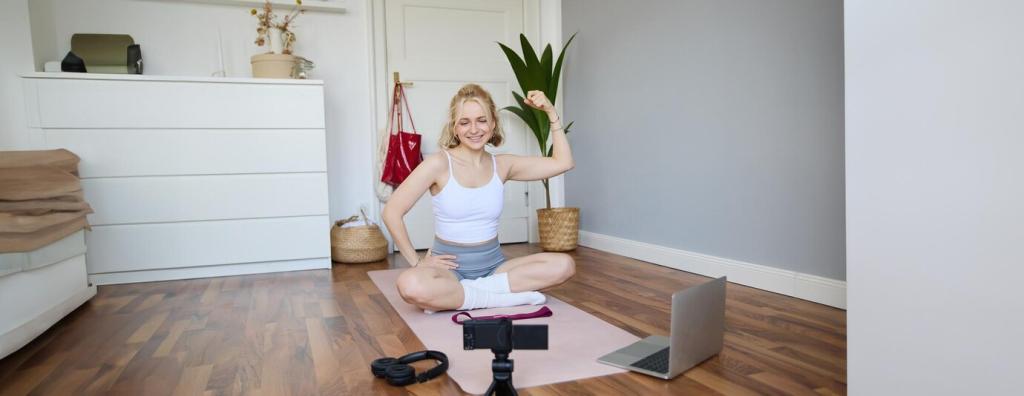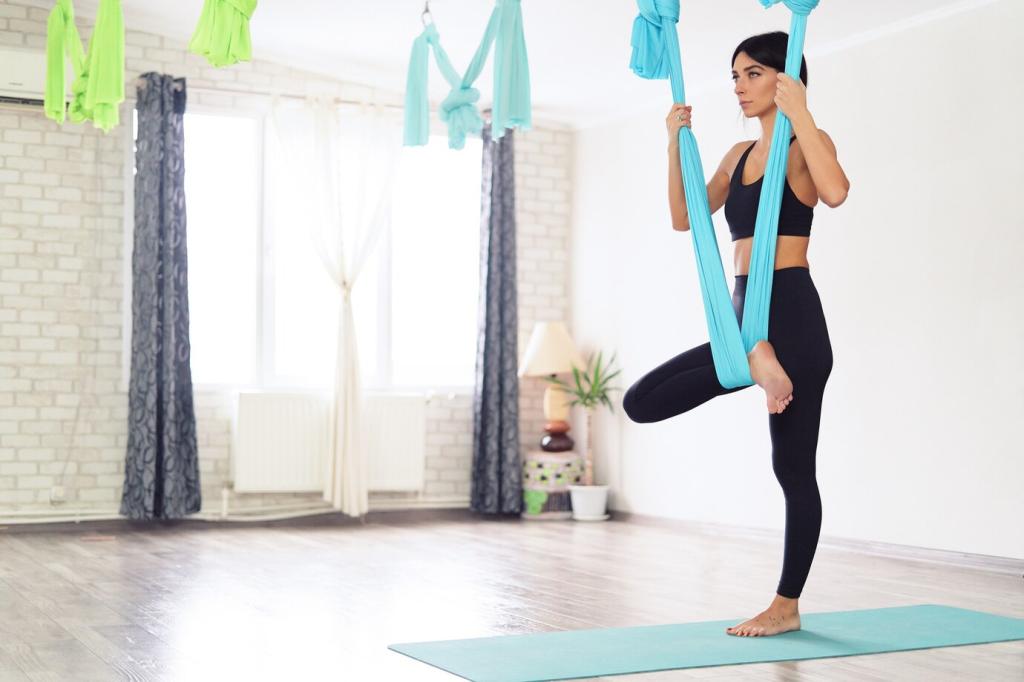Tracking Progress in Home Fitness
Chosen theme: Tracking Progress in Home Fitness. Transform your living room into a results-driven studio by capturing meaningful data, celebrating small wins, and turning daily habits into a story of steady momentum. Subscribe and share your first baseline today to join our community of at-home achievers.

Simple Baseline Tests You Can Do Today
Measure a one-minute push-up count, a plank hold, resting heart rate upon waking, a one-mile brisk walk time, and waist circumference. Add two photos—front and side—under consistent lighting. These quick baselines make early improvements obvious and boost confidence from day one.

Crafting Goals That Metrics Can Actually Measure
Turn vague wishes into trackable targets, like improving your plank from forty seconds to ninety, lowering your resting heart rate by five beats, or adding two reps to each set weekly. Make goals time-bound, realistic, and directly tied to a metric you can update without friction.

A Five-Minute Starting Ritual
Begin each session by noting your energy level, sleep quality, and mood on a simple one-to-five scale. This ritual aligns expectations, reduces overreaching, and helps you correlate performance with recovery. Comment with your ritual template, and we’ll feature creative ideas in future posts.

Design a Home Fitness Dashboard
Use columns for date, session type, sets, reps, weight, RPE, steps, sleep hours, and one quick note. Conditional formatting can highlight personal records and steady streaks. A weekly summary row surfaces what matters most, so you understand progress without scrolling through endless details.

Design a Home Fitness Dashboard
Print a simple grid with seven columns and four rows for the month. Write your session, steps, and mood score each day. The fridge placement turns data into daily encouragement. Add a star sticker for effort, not perfection, to reinforce identity over outcomes when motivation dips.
Understand and Trust the Trends
Track seven-day rolling averages for body weight, step count, and sleep. Individual days fluctuate, but the average reveals direction. A gentle slope in the right direction is victory. Share a screenshot of your rolling averages to encourage others who feel stuck despite doing the work.
Understand and Trust the Trends
Expect two steps forward, one step sideways. Plan a lighter week every four to six weeks, cutting volume by twenty to thirty percent. This prevents burnout and often unlocks new personal records afterward. Note your mood and soreness; the body whispers first, then shouts if you ignore it.
Understand and Trust the Trends
If your data shows steady improvement in reps but plateaued weight, emphasize volume progression before loading heavier. Conversely, if energy and sleep are low, reduce intensity and extend rest. Invite discussion: how has your data nudged you toward smarter adjustments at home?
Motivation, Accountability, and Joy
Gamify Your Streaks Without Burning Out
Track streaks of showing up, not just perfect workouts. Count any meaningful activity—mobility, walking, or light kettlebell practice. Set a minimum of five minutes for a win. Post your current streak below, and tag a friend to join you for next week’s mini-challenge.
Storytelling in Your Training Notes
Add one sentence about how today felt. Over months, these notes form a powerful narrative: the rainy morning you trained anyway, the breakthrough after better sleep, the playlist that saved your energy. Reply with your favorite training note, and we’ll compile community highlights.
Invite a Friend or Community
Accountability accelerates progress. Share your dashboard template, swap metrics, and celebrate each other’s small wins. Join our updates for monthly tracking prompts and printable check-ins. Comment your time zone to find an accountability partner who can cheer your home sessions in real time.
Real-World Stories From the Living Room
With nap-time workouts, a parent tracked steps and three short circuits weekly. Rolling averages revealed steady progress despite messy days. After six weeks, their push-up count doubled, and sleep improved by one hour. Share your tight-schedule routine, and we’ll feature time-saving templates next month.
Real-World Stories From the Living Room
By logging tempo squats, range-of-motion notes, and pain scores, a reader found that slower eccentrics and split squats reduced discomfort. After eight weeks, weekly averages showed fewer flare-ups and deeper, stronger reps. Comment if you want the exact log structure to try at home.



